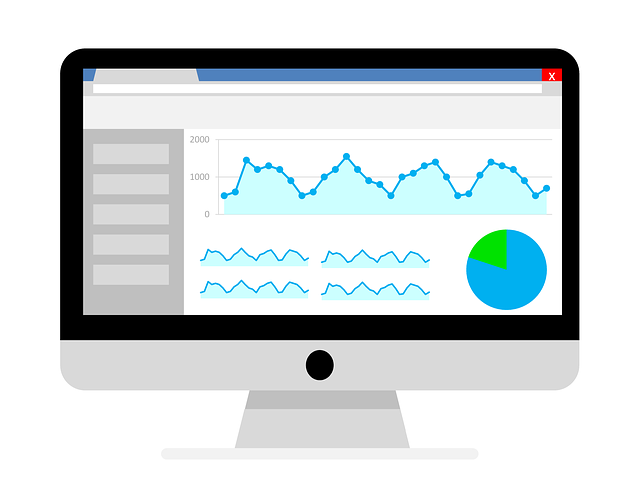Introduction
As a digital enthusiast and a data-driven marketer, I've always found web analytics to be a treasure trove of insights that can elevate your online presence and drive business success.
In this article, we'll explore the dynamic world of web analytics, including the essential tools, Google Web Analytics, and the open-source gem known as Open Web Analytics. So, let's embark on a journey into the fascinating realm of web analytics.
Unveiling the Power of Web Analytics
1. Understanding Web Analytics
Web analytics is the systematic collection, analysis, and interpretation of data related to website usage. It's the process of turning raw data into actionable insights to optimize your online presence, enhance user experience, and achieve your digital goals.
Also Read
· Social Intent Data: What It Is And How It Works
· Unveiling the Magic of Coca-Cola's Marketing Strategy
· Intent-Based Marketing Guide: What Is It and How Does It Work?
Key Aspects of Web Analytics:
Before we dive deeper, let's get acquainted with the fundamental aspects of web analytics:
a) Data Collection: Web analytics tools gather data from website visits, user interactions, and various digital touchpoints.
b) Analysis: The collected data is analyzed to derive meaningful insights about user behavior, preferences, and patterns.
c) Optimization: The insights gained are used to improve website performance, enhance user experience, and achieve specific goals, such as increasing conversions or traffic.
d) Reporting: Web analytics generates reports and visualizations to make the data comprehensible and actionable.
Exploring Web Analytics Tools
2. Leveraging Essential Web Analytics Tools
There's a plethora of web analytics tools available, each offering unique features and insights. Two of the most prominent are Google Web Analytics and Open Web Analytics (OWA). Let's delve into each:
1. Google Web Analytics (Google Analytics):
Google Analytics is the industry standard and one of the most widely used web analytics tools globally. It provides a comprehensive suite of features to track, analyze, and optimize website performance.
Key Features of Google Analytics:
a) Audience Insights: Understand your website visitors, including demographics, location, and devices used.
b) Behavior Analysis: Track user journeys, pages visited, and how users navigate through your site.
c) Conversion Tracking: Measure goals, e-commerce transactions, and user interactions leading to conversions.
d) Traffic Sources: Analyze the sources of website traffic, including organic search, paid search, social media, and referrals.
e) Real-Time Analytics: Monitor website activity in real-time, including current visitors and their interactions.
f) Custom Reports: Create customized reports to focus on specific metrics relevant to your business.
2. Open Web Analytics (OWA):
Open Web Analytics is a powerful open-source alternative to proprietary analytics tools like Google Analytics. It offers similar functionality while allowing greater control and customization.
Key Features of Open Web Analytics (OWA):
a) Self-Hosted: OWA can be hosted on your own servers, providing full control over your data and compliance with data privacy regulations.
b) Real-Time Tracking: OWA offers real-time analytics to monitor website activity instantly.
c) Event Tracking: Track user interactions and events, such as clicks, downloads, and video views.
d) Custom Variables: Define custom variables to capture specific data relevant to your business.
e) E-commerce Tracking: Measure e-commerce performance, including product sales, revenue, and conversions.
The Impact of Web Analytics
3. Measuring Success and Impact
Web analytics is a game-changer for businesses, helping them make data-driven decisions and optimize their online presence. Here's how it creates an impact:
a) Improved User Experience: Analyzing user behavior and preferences enables businesses to tailor their websites for a better user experience.
b) Enhanced Marketing Strategies: Data on traffic sources, conversions, and user engagement guides marketing efforts for maximum impact.
c) Better Content Strategy: Insights into popular content and visitor journeys inform content creation and optimization.
d) Increased Conversions: Web analytics helps identify bottlenecks in the conversion process and optimize it for better results.
e) Cost Efficiency: Analyzing marketing spend and ROI allows businesses to allocate resources more effectively.
f) Real-time Adaptation: Real-time analytics enables immediate responses to emerging trends or issues.
Resources and Further Reading
4. Exploring the World of Web Analytics
For a deeper understanding of web analytics, consider exploring these credible resources:
1. Google Analytics Official Website: Learn more about Google Web Analytics and its features.
2. Open Web Analytics (OWA) Official Website: Discover the open-source analytics tool, OWA, and its capabilities.
3. Moz's Beginner's Guide to Google Analytics: A comprehensive guide for beginners on using Google Analytics effectively.
4. AnalyticsHelp.org: A community-driven resource for web analytics tutorials and guides.
Conclusion
Web analytics is not just about numbers; it's about understanding your audience, optimizing your website, and making informed decisions. Whether you choose Google Web Analytics for its ease of use or Open Web Analytics for greater control, the insights you gain will be invaluable in enhancing your digital presence.
As we navigate the digital landscape, let's remember that web analytics is the compass that guides us, ensuring that we make data-driven decisions and continuously improve our online experiences.
Whether you're a seasoned analyst or just starting your journey, web analytics is a powerful tool that can help you achieve your digital goals and stay ahead in the ever-evolving digital world.

